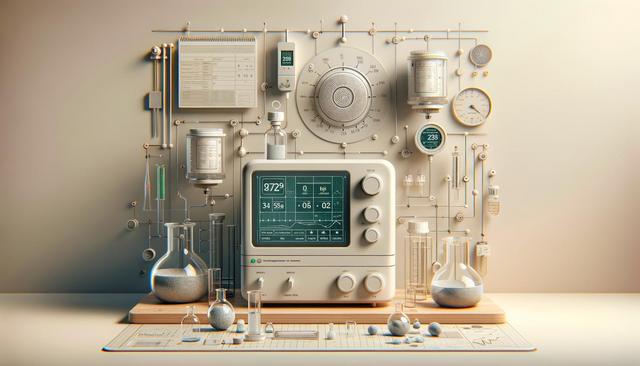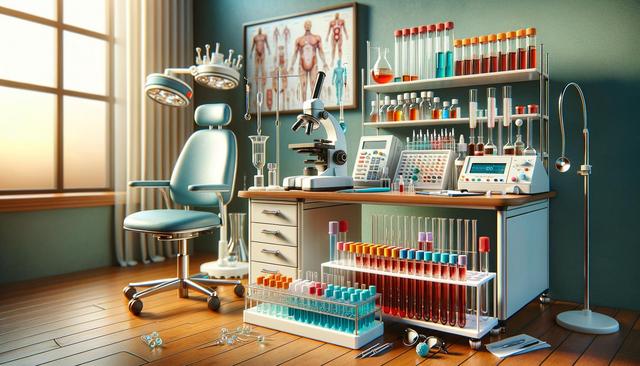Why Temperature and Humidity Matter in Laboratories
Temperature and humidity are two of the most critical environmental factors in any laboratory setting. Fluctuations in these conditions can affect the accuracy of experimental results, compromise sample integrity, and degrade sensitive equipment. For example, certain chemical reactions may only occur correctly within a specific temperature range, while biological samples such as tissue cultures, enzymes, or DNA can be rendered useless if stored in overly dry or humid environments. Similarly, electronic lab instruments can suffer from condensation or static buildup if the humidity is not controlled, leading to costly repairs or calibration issues.
Laboratory environments are often designed with strict climate control, but even the most advanced HVAC systems can benefit from an independent lab temperature and humidity monitor. These devices serve as an extra layer of assurance, alerting personnel to changes that could compromise the integrity of their work. In regulated environments, such as pharmaceutical labs or clinical research facilities, documentation of environmental conditions is often required for compliance, making continuous monitoring a necessity rather than a luxury.
Maintaining consistent temperature and humidity isn’t just about regulatory compliance—it also reflects a lab’s commitment to scientific accuracy and the protection of valuable resources. Without adequate monitoring, even minor fluctuations can lead to significant losses in time, money, and data.
Key Features to Look for in a Monitoring System
When choosing a laboratory temperature and humidity monitor, it’s important to consider several key features that ensure reliable and precise monitoring. Not all devices are created equally, and selecting the right tool can make a significant difference in maintaining environmental stability.
Here are some features to prioritize:
- Accuracy and Sensitivity: Look for sensors with tight tolerances and low error margins to ensure reliable readings.
- Data Logging Capabilities: The ability to store and retrieve historical data is essential for audits and performance reviews.
- Alarm Systems: Real-time alerts via email, SMS, or audible alarms can help respond quickly to any deviations.
- Remote Monitoring: Cloud-based or networked systems allow you to check conditions from any location, which is especially useful for multi-room or multi-site labs.
- Battery Backup: Ensures continued operation in case of power failure, protecting data and maintaining awareness.
Choosing a device with these features helps ensure that your lab remains within optimal environmental parameters at all times. Depending on the specific needs of your laboratory, additional considerations might include the number of sensors, integration with existing systems, and ease of calibration.
Applications in Different Laboratory Settings
Lab temperature and humidity monitors are not one-size-fits-all solutions. Their application can vary greatly depending on the type of laboratory and the materials or processes involved. For example, research labs conducting chemical synthesis may need to maintain stable temperatures to produce consistent reactions, while biological labs handling live cell cultures must prevent both overheating and excessive drying.
Here are some common laboratory types that benefit from environmental monitoring:
- Pharmaceutical Labs: Require stringent environmental control for drug development and stability testing.
- Clinical Research Facilities: Handle temperature-sensitive specimens and need to comply with strict regulatory standards.
- Academic Labs: May have collaborative projects that span multiple departments, requiring uniform environmental conditions across spaces.
- Food Science Labs: Monitor temperature and humidity to prevent spoilage and ensure accurate testing of shelf life and composition.
In each of these environments, precision is paramount. Monitoring systems allow for early detection of environmental deviations, helping labs take corrective action before any damage occurs. This level of responsiveness can be crucial for maintaining the integrity of long-term studies or high-value samples.
Installation and Maintenance Considerations
Installing a laboratory temperature and humidity monitor involves more than just placing a device on a wall. It’s important to consider the placement of sensors, the layout of the lab, and how environmental zones may vary within a space. For example, areas near windows, HVAC vents, or equipment that generates heat may show different readings than central locations. Strategically placing sensors helps capture a more accurate environmental profile.
Maintenance is also a key factor in ensuring ongoing accuracy. Sensors can drift over time and may require periodic calibration. Many high-quality monitors come with calibration certificates and offer easy methods for recalibration either through software or manual adjustment. Regular checks and updates extend the lifespan of the device and ensure consistent performance.
Additional maintenance tips include:
- Check batteries or power sources regularly to prevent unexpected shutdowns.
- Clean sensors and device casings to prevent dust buildup, which can affect readings.
- Review data logs periodically to identify any patterns or recurring issues that need attention.
Proper installation and maintenance of monitoring systems can significantly improve their effectiveness and reliability, ultimately safeguarding your laboratory’s resources and research outcomes.
Integrating Monitoring with Laboratory Management Systems
In today’s digital age, integrating a lab temperature and humidity monitor with broader laboratory management systems (LIMS) can streamline workflows and enhance data accessibility. When environmental monitoring data is automatically logged and linked with sample tracking or experiment documentation, it creates a more complete picture of lab operations.
Benefits of integration include:
- Automated Reporting: Simplifies regulatory compliance by generating reports that include temperature and humidity data linked to specific samples or procedures.
- Centralized Data Access: Allows team members across departments or locations to access environmental data in real time.
- Improved Traceability: Enhances accountability and transparency in research processes by correlating environmental conditions with experimental results.
Some advanced systems even offer AI-driven insights, alerting users to potential risks based on historical data trends. For laboratories aiming to adopt smart lab technologies, environmental monitoring is a foundational step that supports broader digital transformation efforts.
Whether your lab is just starting to digitize its operations or already uses a sophisticated LIMS, integrating monitoring data can add measurable value. It not only improves operational efficiency but also strengthens compliance and quality assurance protocols.
Conclusion: Ensuring Optimal Conditions for Reliable Results
For laboratories where precision and reliability are paramount, a lab temperature and humidity monitor is an essential tool. From ensuring the integrity of sensitive samples to maintaining compliance with industry standards, these monitors provide critical support to daily laboratory operations. Choosing the right system, maintaining it properly, and integrating it with broader lab management tools can significantly enhance your lab’s performance and data quality.
Investing in environmental monitoring is not just about meeting regulatory requirements—it’s about protecting your research, your equipment, and your reputation. Whether you’re managing a small academic lab or a large pharmaceutical facility, understanding and controlling your lab’s environment is a smart, proactive step toward achieving consistent and credible scientific results.




Leave a Reply